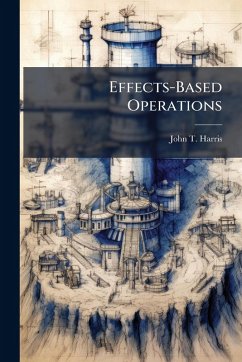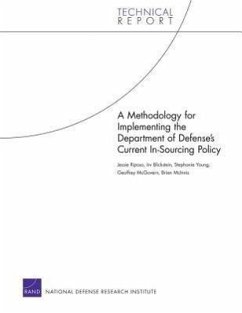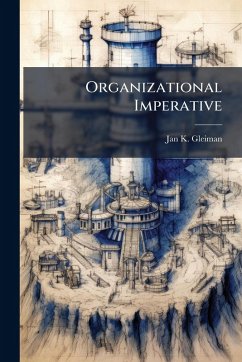
Implementing Effects-Based Operations

PAYBACK Punkte
7 °P sammeln!
This paper addresses an issue pertinent to the organizational structure of a Joint Task Force (JTF). The author proposes the role of the Joint Targeting Coordination Board (JTCB) should be redefined and broadened to function as a Joint Coordination Board (JCB) to facilitate the Joint Force Commander (JFC) in his efforts to employ effects-based operations. Essentially, the 'T' in JTCB should be dropped from the title to allow the board to function with a broader operational scope. The JCB will focus on campaign integration and employment of joint forces by effect, rather than merely synchroniza...
This paper addresses an issue pertinent to the organizational structure of a Joint Task Force (JTF). The author proposes the role of the Joint Targeting Coordination Board (JTCB) should be redefined and broadened to function as a Joint Coordination Board (JCB) to facilitate the Joint Force Commander (JFC) in his efforts to employ effects-based operations. Essentially, the 'T' in JTCB should be dropped from the title to allow the board to function with a broader operational scope. The JCB will focus on campaign integration and employment of joint forces by effect, rather than merely synchronization of events by component. The proposed construct will provide the JFC with a better staff mechanism and organizational framework with a macro-level view of the Joint Operations Area (JOA) to integrate forces and coordinate joint fires with operational maneuvers to achieve desired effects. In an effort to attain effects-based operations at the joint level, redefining and expanding the role of the JTCB to function as a JCB makes sense both from a joint and a component perspective. This work has been selected by scholars as being culturally important, and is part of the knowledge base of civilization as we know it. This work was reproduced from the original artifact, and remains as true to the original work as possible. Therefore, you will see the original copyright references, library stamps (as most of these works have been housed in our most important libraries around the world), and other notations in the work. This work is in the public domain in the United States of America, and possibly other nations. Within the United States, you may freely copy and distribute this work, as no entity (individual or corporate) has a copyright on the body of the work. As a reproduction of a historical artifact, this work may contain missing or blurred pages, poor pictures, errant marks, etc. Scholars believe, and we concur, that this work is important enough to be preserved, reproduced, and made generally available to the public. We appreciate your support of the preservation process, and thank you for being an important part of keeping this knowledge alive and relevant.












